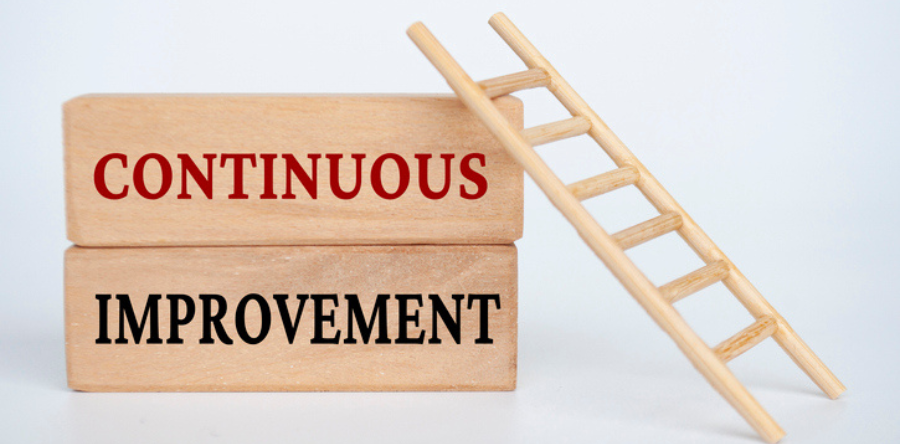2 min read
Making the Business Case for Mental Health in the Workplace
Many leaders underestimate reports of increased sick time and disability due to mental illness. They behave much like an NFL coach when a star...
3 min read
 Michael Cooper
:
May 30, 2024
Michael Cooper
:
May 30, 2024

Thanks to our funding partners, Mental Health Research Canada has been able to collect benchmark data on psychological health and safety in the workplace using the Guarding Minds Evaluation tool for over three years.
Our ongoing collection of rapid and up-to-date data has made us a sought-after resource, particularly in analyzing indicators by sector – including manufacturing, legal, government, education, healthcare, and more.
(If you are interested in seeing these indicators by sector, please visit our interactive data dashboard here: https://www.mhrc.ca/guarding-minds-data)
I’ve noticed a common trend with these requests – they often come from sectors and organizations already deeply invested in fostering mentally healthy workplaces. They recognize the value of psychological safety at work and are usually seeking insights to refine existing strategies, pinpoint areas for improvement, and stay up to date with evolving best practices.
However, many employers still lack a robust strategy for cultivating a mentally healthy workplace. This is a substantial missed opportunity for both employee and organizational well-being.
Neglecting mental health in the workplace can result in a surge of lost-time claims and presenteeism
Organizations involved in processing workplace disability claims are witnessing a notable rise in mental health claims—particularly secondary claims stemming from physical issues cascading into mental health challenges. Specific information on mental health claims from group insurance providers is constrained by confidentiality, organizations like the Canadian Life and Health Insurance Association (CLHIA) have corroborated increasing rates of access.
Even when employees persist in working without taking sick days or disability claims, unaddressed mental health issues can still detrimentally affect the workplace. Presenteeism – when someone is present at work but is so impaired that functioning is difficult, often leads to dramatic productivity loss. Approximately one in five (22%) employed Canadians or students indicate significant impairment while working due to mental health. This also manifests as burnout, impacting about 35% of the working population.
The ROI of creating mentally healthy workplaces
Many leaders feel keeping employees mentally healthy and safe is a moral imperative. They recognize that mental health is part of overall health and that keeping employees in good health is the right thing to do.
Moreover, there’s a growing acknowledgement that investing in mental health initiatives yields substantial economic benefits. In 2016, a landmark study conducted by the Conference Board of Canada, Healthy Brains at Work: Estimating the Impact of Workplace Mental Health Benefits and Programs, estimated that addressing depression and anxiety in the workplace alone would generate $49.6 billion for the Canadian economy.
Further underlining the business case for mental health programs, Deloitte’s 2019 report, “The ROI in workplace mental health programs: Good for people; good for business,” outlined compelling figures. It revealed that for every dollar invested in workplace mental health initiatives, there was a return of $1.62. Moreover, more established programs, which have had time to grow and gain greater acceptance, demonstrated even higher returns, with an ROI of $2.18 for every dollar invested. These findings underscore the financial viability and strategic advantage of prioritizing mental health in the workplace. While slightly outdated, if anything, it’s likely the return on investment has only increased since then.
Creating a mentally healthy workplace is easier than you think
Developing a strategy to suit your business and budget doesn’t have to be complicated; it just requires planning and commitment at all levels of the organization. I believe there are four important pillars anchoring an effective strategy:
Design evaluation tools and tactics when you decide to invest in a program
The Deloitte study examined ten leading companies, many of whom I’ve had the opportunity to speak to. These companies were specifically chosen because they believe in collecting metrics, which can be challenging and is often overlooked as strategies are developed.
They all mentioned using unique metrics to validate whether their programs were working. Most evaluate effectiveness through sick day usage, disability claims, total productivity, and staff retention. The measurement tools they used were devised when they decided to invest in the program.
Mental health in the workplace is good for people and good for business
Prioritizing mental health in the workplace isn’t just a moral obligation—it is a strategic imperative with tangible benefits for employees and organizations. As leaders, your commitment to mental health can create a strong and healthy workplace culture and more resilient, productive, and compassionate employees.
Get to know the authors – Michael Cooper

2 min read
Many leaders underestimate reports of increased sick time and disability due to mental illness. They behave much like an NFL coach when a star...

3 min read
With labour shortages in Canada projected to reach two million workers by 2031, and rising rates of absenteeism, presenteeism, and turnover, it is...

Fostering a supportive and mentally healthy workplace is more crucial than ever in today’s demanding world of work. To create this type of...